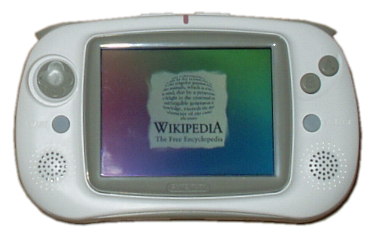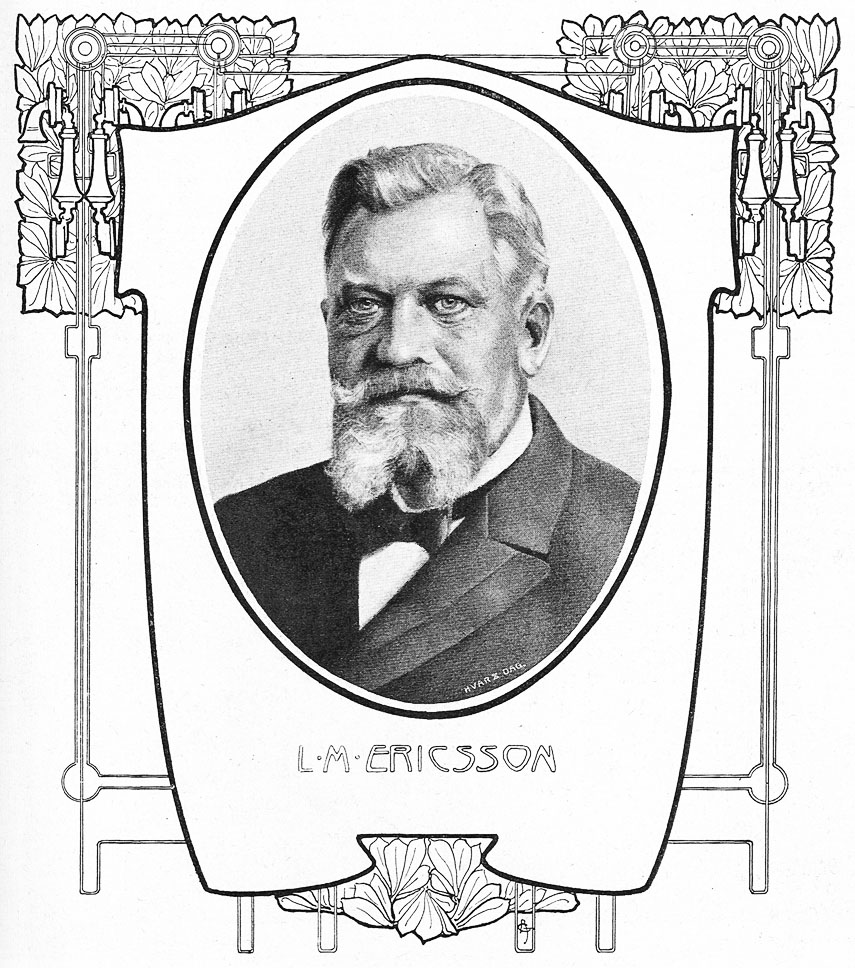|
GamePark 32
The GP32 (GamePark 32) is a handheld game console developed by the South Korean company Game Park. It was released on November 23, 2001, in South Korea and distributed in some parts of Europe. History The GP32 was shown at E3 in 1999, 2000, 2001, and 2002. At one point GamePark produced an unreleased unit with mobile phone functionality. Features The overall design is not unlike the original version of the Game Boy Advance. The GP32 is based on a 133 MHz ARM 9 CPU and 8 MB of SDRAM. Unlike other handheld gaming systems, which tend to be proprietary cartridge-based, the GP32 uses SmartMedia cards (SMC) for storing programs and data, making it accessible for amateur developers as no further development hardware is required. The console has an eight-way microswitch based mini-joystick controller, two main buttons ('A' and 'B'), two shoulder buttons on each side of the SMC slot ('L' and 'R') and two other menu buttons on each side of the screen ('SELECT' and 'START'), mad ... [...More Info...] [...Related Items...] OR: [Wikipedia] [Google] [Baidu] |
Game Park
Game Park was a South Korean company that was founded in 1996 and went bankrupt in March 2007. It is responsible for creating the GP32 and the never-released XGP. GamePark Holdings was founded by former employees of Game Park in 2005. Foundation Founded in 1996 in South Korea, Game Park entered the industry using government money. At the time, games in Korea were only made for PCs and Arcade. There was a law established after World War II that forbid importation of Japanese electronics. Some clones of Japanese consoles such as the Sega Saturn (cloned by Samsung) and Nintendo 64 (cloned by Hyundai) were holders of minor market shares. In a place where most games ran on the PC, a small place resided for video game consoles. To make changes, the South Korean government decided to fund a company that would create a console to compete against the monopolized Japanese market. A contest was held and Game Park was the winning company. Game Park was set to create the first port ... [...More Info...] [...Related Items...] OR: [Wikipedia] [Google] [Baidu] |
Ericsson
(lit. "Telephone Stock Company of LM Ericsson"), commonly known as Ericsson, is a Sweden, Swedish multinational networking and telecommunications company headquartered in Stockholm. The company sells infrastructure, software, and services in information and communications technology for telecommunications service providers and enterprises, including, among others, 3G, 4G, and 5G equipment, and Internet Protocol (IP) and optical transport systems. The company employs around 100,000 people and operates in more than 180 countries. Ericsson has over 57,000 granted patents. Ericsson has been a major contributor to the development of the telecommunications industry and is one of the leaders in 5G. The company was founded in 1876 by Lars Magnus Ericsson and is jointly controlled by the Wallenberg family through its holding company Investor AB, and the universal bank Handelsbanken through its investment company Industrivärden. The Wallenbergs and the Handelsbanken sphere acquired th ... [...More Info...] [...Related Items...] OR: [Wikipedia] [Google] [Baidu] |
Gp32-flu
{{Letter-NumberCombDisambig ...
GP3 may refer to: * GP3 Series, an open-wheeler motor racing series launched in 2010 * ''Grand Prix 3'', a racing simulator game * .gp3, format used by Guitar Pro * ''1999 GP3'' or (17055) 1999 GP3, a minor planet See also * Moto3, motorcycle GP class 3 * GPPP, global public–private partnership * 3GP, a file format * * G3P (other) (other) * GP (other) Gp or GP may refer to: Arts, entertainment, and media Gaming * Gameplanet (New Zealand), a New Zealand video game community * GamePolitics.com, a blog about the politics of computer and video games * ''GamePro'', a monthly video game magazine * ... [...More Info...] [...Related Items...] OR: [Wikipedia] [Google] [Baidu] |
Public Domain
The public domain (PD) consists of all the creative work to which no exclusive intellectual property rights apply. Those rights may have expired, been forfeited, expressly waived, or may be inapplicable. Because those rights have expired, anyone can legally use or reference those works without permission. As examples, the works of William Shakespeare, Ludwig van Beethoven, Leonardo da Vinci and Georges Méliès are in the public domain either by virtue of their having been created before copyright existed, or by their copyright term having expired. Some works are not covered by a country's copyright laws, and are therefore in the public domain; for example, in the United States, items excluded from copyright include the formulae of Newtonian physics, cooking recipes,Copyright Protection No ... [...More Info...] [...Related Items...] OR: [Wikipedia] [Google] [Baidu] |
Porting
In software engineering, porting is the process of adapting software for the purpose of achieving some form of execution in a computing environment that is different from the one that a given program (meant for such execution) was originally designed for (e.g., different CPU, operating system, or third party library). The term is also used when software/hardware is changed to make them usable in different environments. Software is ''portable'' when the cost of porting it to a new platform is significantly less than the cost of writing it from scratch. The lower the cost of porting software relative to its implementation cost, the more portable it is said to be. Etymology The term "port" is derived from the Latin '' portāre'', meaning "to carry". When code is not compatible with a particular operating system or architecture, the code must be "carried" to the new system. The term is not generally applied to the process of adapting software to run with less memory on the sam ... [...More Info...] [...Related Items...] OR: [Wikipedia] [Google] [Baidu] |
Free Software
Free software or libre software is computer software distributed under terms that allow users to run the software for any purpose as well as to study, change, and distribute it and any adapted versions. Free software is a matter of liberty, not price; all users are legally free to do what they want with their copies of a free software (including profiting from them) regardless of how much is paid to obtain the program.Selling Free Software (gnu.org) Computer programs are deemed "free" if they give end-users (not just the developer) ultimate control over the software and, subsequently, over their devices. The right to study and modify a computer program entails that source code< ... [...More Info...] [...Related Items...] OR: [Wikipedia] [Google] [Baidu] |
Open Source
Open source is source code that is made freely available for possible modification and redistribution. Products include permission to use the source code, design documents, or content of the product. The open-source model is a decentralized software development model that encourages open collaboration. A main principle of open-source software development is peer production, with products such as source code, blueprints, and documentation freely available to the public. The open-source movement in software began as a response to the limitations of proprietary code. The model is used for projects such as in open-source appropriate technology, and open-source drug discovery. Open source promotes universal access via an open-source or free license to a product's design or blueprint, and universal redistribution of that design or blueprint. Before the phrase ''open source'' became widely adopted, developers and producers have used a variety of other terms. ''Open source'' gai ... [...More Info...] [...Related Items...] OR: [Wikipedia] [Google] [Baidu] |
Blue Angelo
Blue is one of the three primary colours in the RYB color model, RYB colour model (traditional colour theory), as well as in the RGB color model, RGB (additive) colour model. It lies between Violet (color), violet and cyan on the optical spectrum, spectrum of visible light. The eye perceives blue when observing light with a dominant wavelength between approximately 450 and 495 nanometres. Most blues contain a slight mixture of other colours; Azure (color), azure contains some green, while ultramarine contains some violet. The clear daytime sky and the deep sea appear blue because of an optical effect known as Rayleigh scattering#Cause of the blue colour of the sky, Rayleigh scattering. An optical effect called Tyndall effect explains Eye color#Blue, blue eyes. Distant objects appear more blue because of another optical effect called aerial perspective. Blue has been an important colour in art and decoration since ancient times. The semi-precious stone lapis lazuli was used i ... [...More Info...] [...Related Items...] OR: [Wikipedia] [Google] [Baidu] |
RPG Maker
RPG Maker, known in Japan as , is a series of programs for the development of role-playing video games (RPGs) with story-driven elements, created by the Japanese group ASCII, succeeded by Enterbrain. The Japanese name, ''Tsukūru'', is a pun mixing the Japanese word ''tsukuru'' (作る), means "make" or "create", with ''tsūru'' (ツール), the Japanese transcription of the English word "tool". The RPG Maker series was originally released primarily in Japan, but people started to translate and release the software illegally in China, Taiwan, South Korea, Russia, and North America with RPG Maker 2000 and RPG Maker 2003. Most of the later engines have been officially translated. PC versions RPG Maker is a program that allows users to create their own role-playing video games. Most versions include a tile set based map editor (tilesets are called ''chipsets'' in pre-XP versions), a simple scripting language for scripting events, and a battle editor. All versions include i ... [...More Info...] [...Related Items...] OR: [Wikipedia] [Google] [Baidu] |
Homebrew (video Games)
Homebrew, when applied to video games, refers to games produced by hobbyists for proprietary video game consoles which are not intended to be user-programmable. The official documentation is often only available to licensed developers, and these systems may use storage formats that make distribution difficult, such as ROM cartridges or encrypted CD-ROMs. Many consoles have hardware restrictions to prevent unauthorized development. A non-professional developer for a system intended to be user-programmable, like the Commodore 64, is simply called a ''hobbyist'' (rather than a ''homebrew developer''). Development can use unofficial, community maintained toolchains or official development kits such as Net Yaroze, Linux for PlayStation 2, or Microsoft XNA. Targets for homebrew games are typically those which are no longer commercially relevant or produced, and with lower standards in art quality, such as the Atari 2600, Nintendo Entertainment System, Wii, Nintendo 3DS, Genesis, ... [...More Info...] [...Related Items...] OR: [Wikipedia] [Google] [Baidu] |



